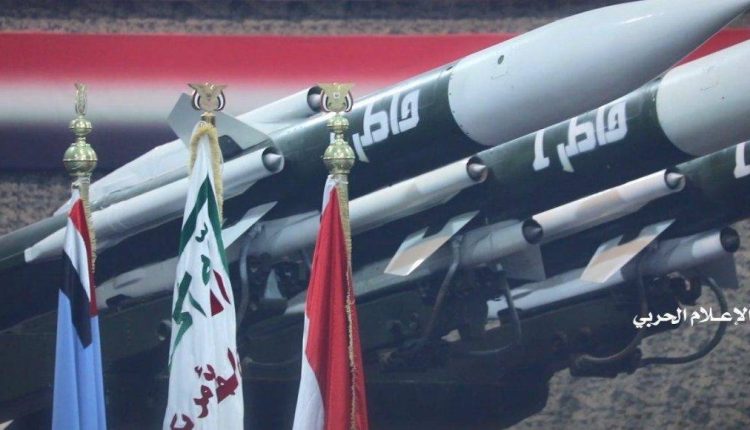From Above Sana’a… the Illusion Collapsed: Yemeni Defenses Expose the Myth of Zionist Air Superiority
Amid the ongoing aggression of the Zionist entity against the Yemeni capital Sana’a, Yemen’s air defenses have demonstrated an unprecedented ability to overturn established power equations. Official statements from Yemeni leadership, along with Zionist admissions acknowledging the difficulty of conducting operations over Sana’a, reflect a qualitative shift in the regional balance of deterrence. Yemen is no longer merely a peripheral battlefield for the enemy but a force capable of imposing real constraints on its movements and redefining the rules of engagement across the region.
This comes in the context of a systematic campaign targeting civilians and civilian facilities—including newspapers and healthcare centers—in an attempt to exert psychological and strategic pressure on Yemen to abandon its firm stance on the Palestinian cause. Yet the resilience of Yemen’s air defenses, coupled with the development of precise offensive tactics, has rendered any attempt to influence Sana’a or its position on Gaza extremely costly for the enemy. This underscores Yemen’s capacity to combine effective defense with offensive reach simultaneously.
Yemeni Defense and Effective Deterrence
Brigadier General Yahya Saree, spokesperson for the Yemeni Armed Forces, affirmed the deterrent capacity of the air defenses, stating:
“The Yemeni Armed Forces managed to launch several surface-to-air missiles during the confrontation with the Zionist aggression against our country, forcing some combat formations to retreat before carrying out their missions and thwarting the greater part of the attack, thanks to God.”
He stressed that the Yemeni Armed Forces reject the enemy’s claims of striking missile launch sites, clarifying that the raids targeted purely civilian objectives—including the offices of 26 September and Al-Yemen newspapers—resulting in martyrs and wounded among journalists and ordinary citizens. These statements were later corroborated by Zionist admissions highlighting the challenges faced by Israeli warplanes over Sana’a and their setbacks against Yemeni defenses.
Zionist Admissions of Yemeni Capabilities
Hebrew media outlets underscored the complexity Israeli warplanes encountered during the assault on Sana’a. The Walla news site quoted military sources as saying:
“Tonight’s operation was not easy. Yemeni defenses disrupted the pilots and forced some jets to withdraw.”
Meanwhile, Yedioth Ahronoth confirmed:
“Our fighters were unable to carry out their full missions over Sana’a due to heavy Yemeni surface-to-air fire.”
Israeli reports further noted that “Yemen’s skies have become more dangerous than expected,” and that “defense systems there now pose a genuine threat to Israeli aircraft,” describing the airspace as “complex and hazardous in ways we have never encountered before.” These acknowledgments represent a frank assessment from within the Zionist military and media establishment of the threat Yemen poses to the enemy’s aerial depth—an indicator of shifting air power balances.
Attacks on Civilians and Infrastructure
In an effort to weaken Yemen’s stance on Gaza, the Zionist entity launched a direct strike on the residential al-Tahrir neighborhood, targeting the buildings of 26 September and Al-Yemen newspapers as well as civilian homes, under the pretext of hitting military sites. The aggression also struck the medical station of the health sector on Sixty Street, southwest of the capital.
Yet these crimes achieved no tangible military goal. Instead, they reinforced Yemen’s conviction that any attack on civilians or vital facilities will be met with real deterrence—linking defensive measures to targeted tactical offensives against the enemy’s strategic assets, ensuring civilian protection while consolidating deterrence dynamics.
Challenging the Myth of Air Superiority
Analysis of both Zionist admissions and Yemeni Armed Forces statements reveals a tangible transformation in the regional balance of power. Yemen is no longer a secondary or marginal force but one capable of imposing real limits on enemy operations, forcing aircraft to retreat before executing missions. This neutralizes Israeli air superiority and makes any future moves fraught with risk.
Yemeni air defenses have proven to be more than defensive tools; they are part of an integrated effort to safeguard civilians and critical infrastructure, while exerting continuous pressure on the enemy to recalibrate its strategies. Precise Yemeni strikes deep inside enemy territory—including airports and vital centers—demonstrate Sana’a’s ability to translate symbolic support for Gaza into concrete battlefield realities that force the enemy to reconsider its security and strategic calculations.
Yemen’s ability to merge defensive deterrence with offensive reach, while exposing the occupation’s crimes against civilians and infrastructure, strengthens its position as an active regional player. It proves that any new aggression will be confronted with calibrated, integrated capabilities—both defensive and offensive. This balance between strength and protection, deterrence and pressure, marks a qualitative leap in Yemen’s deterrence capacity and confirms that any attempt to terrorize Yemenis or pressure them into abandoning Gaza will ultimately fail.
Sana’a Imposes Deterrence
What unfolded in the skies over Sana’a was not a fleeting skirmish but a fundamental shift in the regional balance of power. Zionist admissions, combined with Yemen’s effective response, confirm that any attack on civilians or critical infrastructure will not go unanswered. Yemen today stands as a force able to enforce deterrence by air, land, and sea—turning any aggression against the Palestinian people into a militarily complex situation that imposes heavy costs on the enemy.
This military performance clearly demonstrates that Yemen relies not on slogans or symbolic statements, but on comprehensive field strategies that transform support for Gaza into concrete realities. It converts military and political pressure on the enemy into practical, measurable consequences—making any future threat against the Palestinian people costly and deeply unsettling for the Zionist entity.

